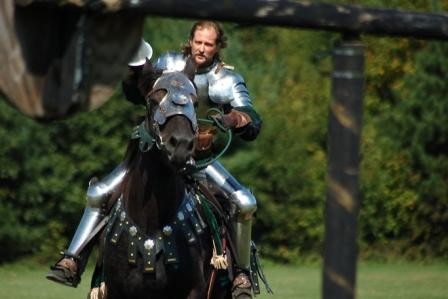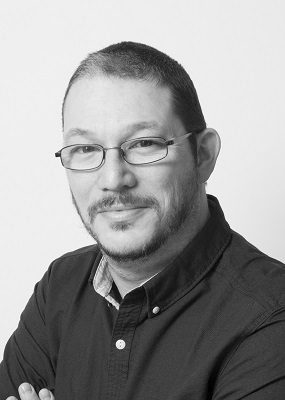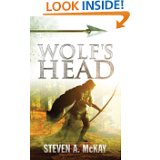Am I unique? Don’t think so…
I was asked by historical fiction writer Ann Swinfen to be part of a Writing Process Blog Tour this week. Ann is a superbly elegant writer of literary and historical fiction. Formally a mainstream writer, she has now taken her backlist to the writing public independently and added to it with Flood, a stunning book on the politics of humanity in the 17th century Fens and with The Testament of Mariam which is a sensitively handled novel, poignant and crafted, about Jesus’s sister. You can read about Ann’s writing process here. http://www.annswinfen.com/column

The questions for this blog tour reveal me in situ at my ‘desk’, (bearing in mind my ‘desk’ moves from town to House every few days) pouring the sweat of my soul onto the screen. Read on:
1. What am I working on?
It’s the end of summer in Australia and I sometimes ask myself if I am actually writing at all when I take advantage of sun, sea and sand. But the truth is I write so much more and so much better in summer. I am ¾’s of the way through the final book of The Gisborne Saga – Gisborne: Book of Kings.

Three books ago, I became enthralled with the Robin Hood legend, but rather than taking Robin’s story and re-writing it, I decided to take Guy of Gisborne’s story and move it far from the original canon. We are told that Gisborne ended his life separated from his head and I suppose we all applauded that after his less than chivalrous treatment of the peasants around Nottingham.
But I had a decidedly ‘what-if’ moment.
What if Gisborne had never met the Sheriff of Nottingham? What if he had never met Maid Marian? What if he had never met Robin Hood? How would his life have been different? What might have happened? In this final book in the trilogy, we follow Guy of Gisborne, his lady, Ysabel, and a cast of favourite characters ranging from a dwarf minstrel to an Arab physician. It is a poignant, maybe even a tragic story. The Middle Ages were not for the faint-hearted and this story illuminates that.
Each day, I struggle with medieval Christian values, with revenge and brutality and one little child called William who is an angel and an innocent and can’t say his ‘s’s. I love the writing of this story. I think Ysabel has grown and Gisborne has suffered – what the end result will be I cannot say. Sometimes I wonder if I even know, as the characters have a way of riding at the quintain and spinning it off its axis every time.

2. How does my work differ from others of its genre?
I don’t think it differs all that much at all and I am not sure I want it to. Historical fiction is a steady, strong genre which draws on past lives to give it texture and depth. That said, if my work is any different, it may be that I take an event and make it utterly and uniquely my own. Show me another Guy of Gisborne that has lived his life so far from the Sheriff of Nottingham and Prince John. That is quite simply why everyone must read the saga! It’ll change your image of Basil Rathbone and Richard Armitage forever, I swear!


3. Why do I write what I do?
I write historical fiction because I am compelled to. Isn’t that wonderfully clichéd? But I truthfully love history, I like the way it can define our own lives. And even more so, I especially love the way daily archeological and forensic discoveries are changing the way we view our history. It’s fluid and can be bent more with each find. So it was for me when I decided to take the Gisborne legend and re-write it. Fluid, bendable…
4. How does my writing process work?
*I have a one page outline of the story from the original idea.
*I have a character call-up with card profiles for each one, including images from real-life of people who might look like the characters. For major male and female characters, if they are based on a particular actor then I will watch that actor in various roles over and over to get the nuances of movement and expression. Subsequently I fill in a sheet/profile for each character (a mini history).
*I have a pinboard (Pinterest) of all images of locales, routes, architecture, lifestyles etc that are suited to the novel.
*Those research books set aside for the novel are defined by dozens of post-its that mark key points.
*You Tube sequences are bookmarked on my computer.
*I have a large (very large) A4 folder with plastic leaves into which I insert any photocopies and print-outs of research for that particular novel.
*I have a running style sheet divided into alphabetical order on which I write all names and odd words so that the spelling can be consistent throughout.
*In my head, I have key points which the novel must reach before it can move on.
* I write my whole story on A4 paper and in pen. The story evolves and I transcribe to the computer and edit every 30 pages.
*I read through and edit again.
*It is sent to two Beta-readers when finished. For unbiased comment.
*I edit again.
*Finally it is sent to my UK editor and we have a month of work nipping and tucking.
I am a much slower writer than the average independent author. The book, from idea to research to writing and editing, takes about a year. Then it has a professional cover design, formatting and is ready for release to an unsuspecting public. But that 12 months is absolutely key to me getting my work out in the way I want. Professional advice these days is to write often and fast, publishing 2-3 books a year. For me that is uncomfortable, indeed well nigh impossible because I’m a farmer’s wife and have almost an acre of gardens. If my readers can cope with a year between books, I will love them forever!
And if you wish to hot foot it over to the links below, you can read the first two books of the saga and be up to date before Gisborne – Book of Kings is released in late May of this year.

Gisborne – Book of Pawns.
Kindle UK: http://amzn.to/LrzO8l
Kindle USA: http://amzn.to/JFLNh8
Gisborne – Book of Knights.
Kindle UK: http://amzn.to/13F2im9
Kindle USA: http://amzn.to/1awRZ9Z
***
Now…
As part of this blog tour, I am required to invite three writers to continue the tour. I thought I would invite the three that have impressed me most in the last year and fortunately they agreed. I urge you to seek them out because in their own way, they are contributing great writing to the hist.fict genre.
SJA Turney.  Not just a writer of energetic Roman fiction but also one of the most exciting series I have read in the last two years, titled The Ottoman Cycle. He’s one of the most successful independent writers to emerge within the historical fiction genre in this new era of publishing. ‘Turney … weaves a fantastic fast paced, well researched atmospheric tale that sucks the reader back in time into the mix of… dirty streets and dangerous politics. His skill is always in educating whilst entertaining and (he) does it in spades.’
Not just a writer of energetic Roman fiction but also one of the most exciting series I have read in the last two years, titled The Ottoman Cycle. He’s one of the most successful independent writers to emerge within the historical fiction genre in this new era of publishing. ‘Turney … weaves a fantastic fast paced, well researched atmospheric tale that sucks the reader back in time into the mix of… dirty streets and dangerous politics. His skill is always in educating whilst entertaining and (he) does it in spades.’
He is a historian and writer of Roman and Medieval historical fiction, as well as the occasional Fantasy work. His love of antiquity and travel has combined with his only worthwhile talent to produce three series so far, with two more in the works. Simon lives in rural northern England, where he finds it easy to procrastinate.
He has just returned from a trip to Istanbul, researching the last piece of the jigsaw of The Ottoman Cycle. I’m thrilled he accepted my invitation.

David Pilling.

I invited this gentleman because he has taken Gisborne’s arch enemy, Robin Hood, and set him in 1224 (only 30-ish years beyond my own trilogy) in a series that I absolutely loved. “Mingling fact with fiction, and drawing heavily on surviving contemporary records, “Robin Hood” is a tough and unsqueamish tale and like no other version of the ancient legend.” I urge everyone who has ever enjoyed the Robin Hood Tale to buy this version. I swear you will not be disappointed. David too, has just returned from Turkey and I long to see if we are to enjoy a novel because of the trip.
David is an English writer and researcher, addicted to history for as long as he can remember. He spent much of his childhood dragging his parents up and down the misted ruins of castles in Wales, and the medieval period has always held a particular fascination. He is also interested in the Roman period, the Dark Ages and the British Civil Wars of the 17th century. His latest book is a twist on Arthurian legend.

Steven A Mckay.

How could I not invite this furiously energetic Scotsman? Another writer of the Robin Hood legend and one who has moved the whole thing, lock, stock and screaming war-arrows to 1321 AD and the reign of Edward II. The second in the series is to be launched at the London Book Fair 2014 and that’s no mean feat for an independent. His series ‘brings the brutality, injustice and intensity of life in medieval England vividly to life, and marks the beginning of a thrilling new historical fiction series.’ It too is a must read and rounds off interpretive ways of writing history perfectly.
Steven was born in 1977, near Glasgow in Scotland and now lives in Old Kilpatrick with his wife and two young children. Bernard Cornwell’s King Arthur series was his biggest influence in writing “Wolf’s Head”, and now “The Wolf and the Raven”. He plays lead/acoustic guitars (and occasional bass/vocals) in a heavy metal band when he can find the time to meet up with his fellow band members.

Now you might say – ‘but they are all men!’
Well yes, they are, but don’t hold it against them. I love working with men and have done so all my life in the media and on the farm. The writers above are giants in the independent field and I have a great deal of respect for each one of them.
Go seek them out people, and run, don’t walk!
And if and when you do, please review them (and me). It’s one of the best ways for a writer to see his/her books reach the people he/she is writing for.
Cheers all!

Great post – your creational process has all the right ingredients. The proof being in the consistently mouth-watering puddings. Great stuff!
Thanks so much, Johnny Crowman!
Prue, you are far better organised than I am! The research and the note-taking, yes – I do a massive amount there. But in creating the novels, I carry the majority of it in my head. I find that if I start writing down character profiles and so on, it takes the gloss off the writing process. Isn’t it interesting how we all work differently? I think that, like me, you do work through a story from beginning to end, but there are writers who write the separate scenes quite independently, then fit the whole jigsaw together. (Hilary Mantel is one.) I might make a note about a future scene, to remind myself, but would never write it until I had written everything leading up to it, for the story may take it upon itself to change in the meantime. Fascinating, isn’t it?
It is really interesting how we all differ and I think that is exactly the way it should be. There is no right way.
For me, visualisation of my characters is vital as my stories are always intensely character-driven. Hence the preference for images and detail. Someone from the theatre once told me that I could learn a lot from examining actors working at their trade and I have honestly never looked back since that day. But not only that, having a slight backstory for all characters gives the characters added dimension (especially in a series) and is often the key that opens the lock to the next book to be written.
I could no more write scenes and join them all together than fly – and with the greatest respect to someone of Mantel’s undeniable calibre and iconic skill, it might be why I’m not such a big fan.
Whilst I have that original idea on paper, I’m what they call a ‘pantser’ – my story controls me and I let it take me on a journey into the unknown every day I sit to write, relying on my editor to straighten out any kinks.
I always have a very clear backstory for all my characters – I just don’t write it down! More of the material I carry around in my head. And I do collect faces too. Christoval was always a problem, but I was immensely pleased when I found the contemporary portrait we’ve used on the cover. It has just the ambiguous quality I wanted. And I agree that one can learn a lot from actors, all the more from television drama, because of its intimate, close-up nature, more revealing than the long-distance of stage or big screen. I suspect that Hilary Mantel has a very clear overall picture in her mind before she writes those separate scenes. Like you sh’s immensely well organised. It’s just not the way I can work.
A fascinating insight into the creative process, Prue. And the comments show how much it differs from writer to writer.
I must check out those books — they all sound like good reads.
I can’t wait to read how the chaps do it, Giselle. And reading Ann’s process was just as interesting. I do recommend all the books mentioned. Not just the men, but Ann’s as well – Ann’s Cristoval is possibly one of the best books on the Tudor period to emerge in the last year, I think. I loved it – as one of the reviews said, it’s a keeper. And it’s pretty obvious what I think of the men’s output! I suspect you have a historical fiction predilection, so do read them all. All very different writers, all top of the tree.
Excellent blog, nice one Prue!
Thank you Stormwatch 1977. And good luck at the LBF!!!
Prue, this is such an excellent post – thank you for sharing some of how you structure your writing – it will help me as I begin my second novel and hopefully I will not have the same, long, terrifying learning curve of the first one. Many, many thanks.
Judith, I’m sure you have your own techniques that work for you. The main thing is, I think, to be happy with your style and approach to the artform. No one way is right, as i said to Ann Swinfen. My feeling is, if you are relaxed, the words will flow smoothly. Thank you for your interest and your compliment.
What a wonderful ‘share’.